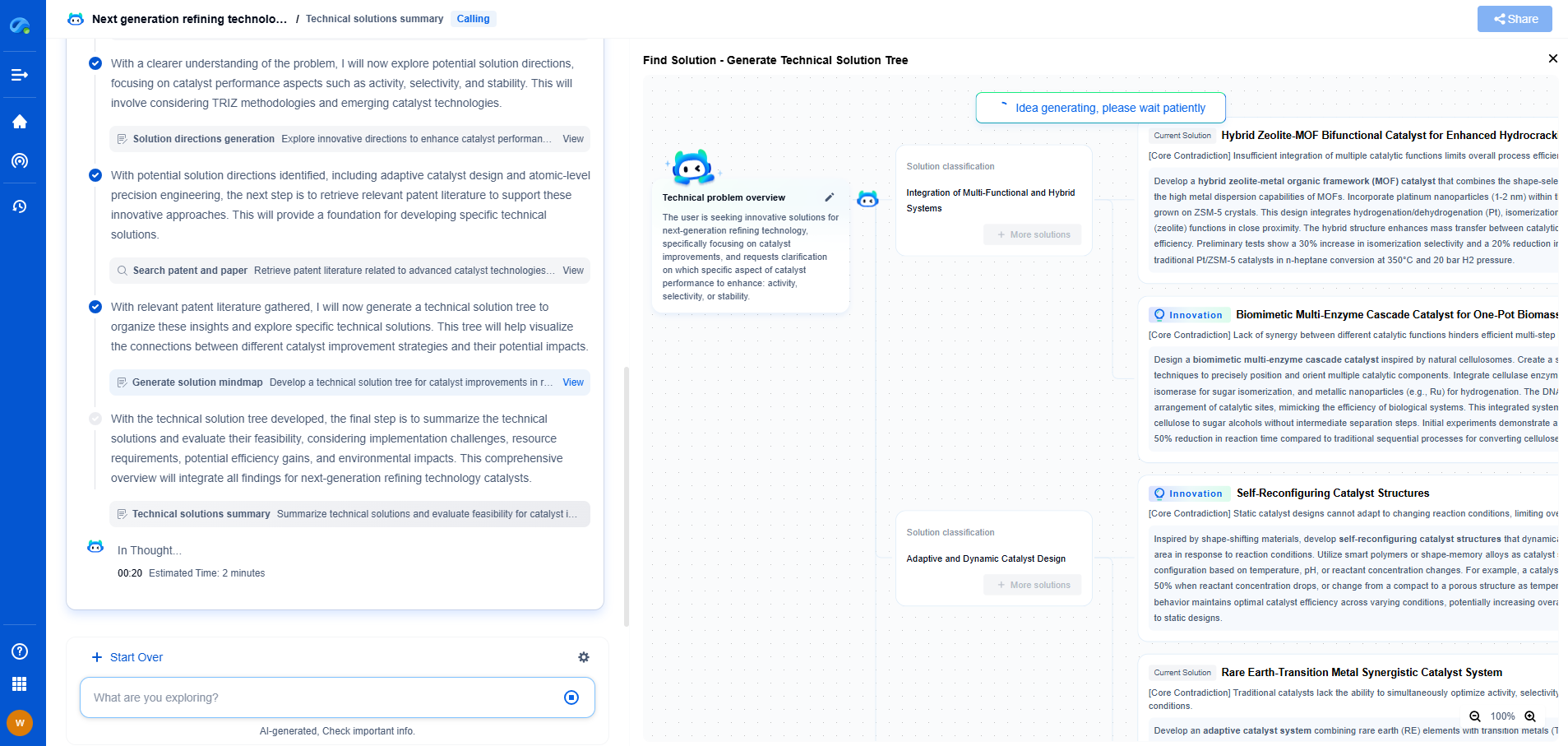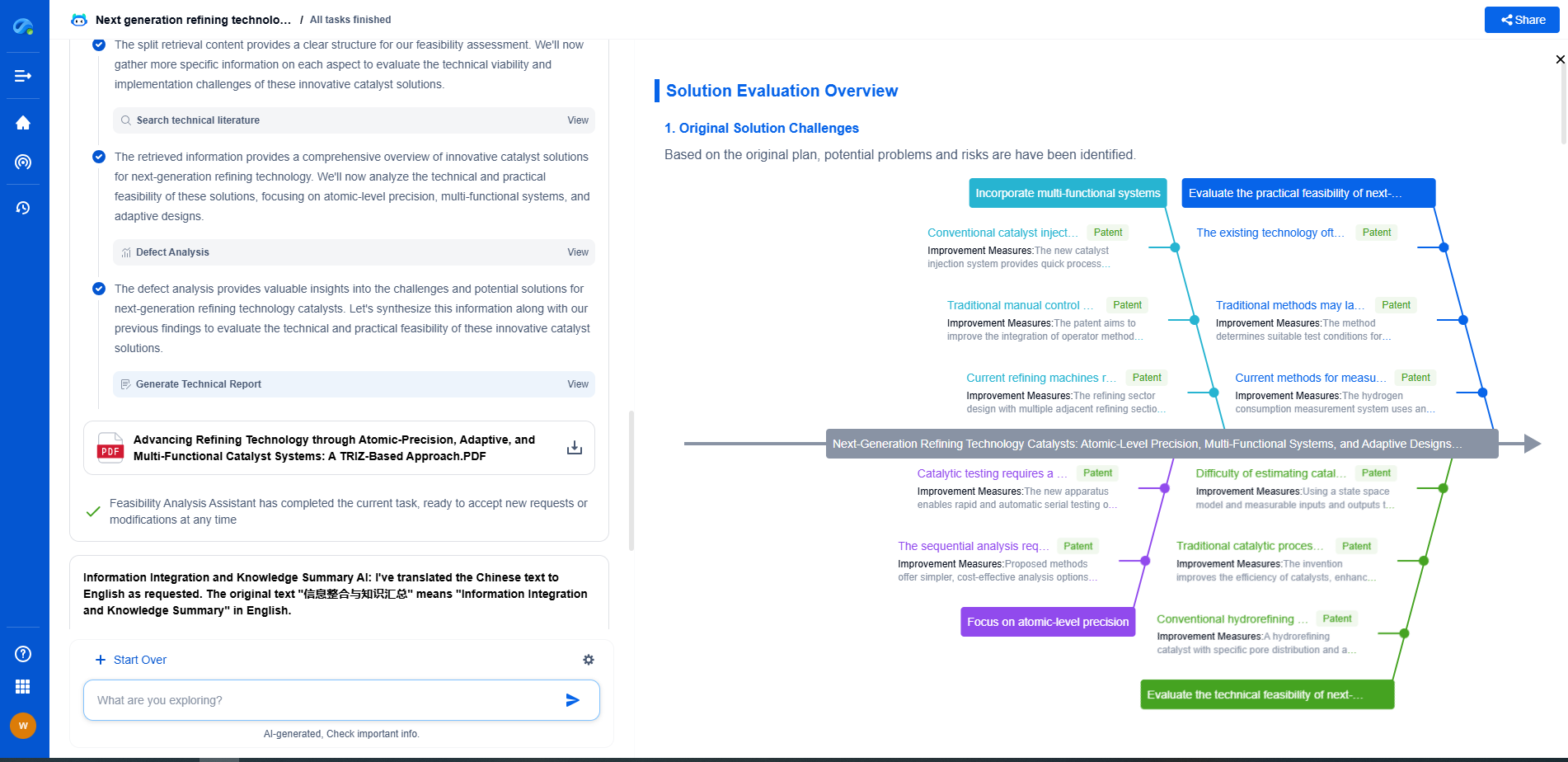What Are the International Standards for Solid-State Battery Safety?
JUN 20, 2025 |
Solid-state batteries are emerging as a promising alternative to traditional lithium-ion batteries due to their potential for higher energy density, improved safety, and longer lifespan. Unlike conventional batteries, solid-state batteries utilize a solid electrolyte instead of a liquid one, which mitigates the risk of leaks and significantly reduces the chances of combustion. However, with these new technologies, ensuring safety standards that maintain public and consumer trust is crucial. As the industry grows, so does the need for comprehensive international standards that address the safety of solid-state batteries.
The Importance of Safety Standards
Safety standards are essential for any energy storage technology, and this is especially true for solid-state batteries. These standards help manufacturers design batteries that are safe for consumer use, provide guidelines for testing and certification, and ensure that all products meet minimum safety requirements. Without these standards, there could be significant risks associated with the use of these batteries, ranging from minor malfunctions to major safety hazards, including fires and explosions.
Existing Standards and Guidelines
Currently, there are several international bodies that establish standards for battery safety, including the International Electrotechnical Commission (IEC), the International Organization for Standardization (ISO), and Underwriters Laboratories (UL). While these organizations have developed standards for lithium-ion batteries, they are also working on adapting and creating guidelines specifically for solid-state batteries.
The IEC has taken a proactive approach by developing testing standards such as IEC 62660-3, which is focused on performance and safety requirements for secondary batteries for electric vehicles. This includes various aspects of solid-state technology. Similarly, ISO has made strides in this field by incorporating solid-state battery safety into broader energy storage system standards.
Key Safety Concerns and Testing Procedures
There are several safety concerns specific to solid-state batteries that international standards aim to address. These include thermal stability, chemical stability, mechanical integrity, and electrical performance. Solid-state batteries must withstand a range of conditions, including high temperatures and physical impacts, without degrading or posing a safety risk.
Testing procedures are designed to simulate real-world conditions to ensure that solid-state batteries perform safely under various scenarios. This includes thermal abuse tests, mechanical shock and vibration tests, and overcharge and short-circuit tests. Standards also often require lifetime testing to ensure that the batteries remain safe throughout their expected lifespan.
Emerging Standards and Future Directions
As solid-state battery technology continues to evolve, so too will the standards governing their safety. Future standards are expected to address the unique characteristics of next-generation solid-state batteries, such as different solid electrolytes and diverse manufacturing techniques. Collaboration between international organizations, manufacturers, and researchers is crucial in establishing robust standards that can keep pace with technological advancements.
Moreover, as solid-state batteries become more prevalent in applications ranging from consumer electronics to electric vehicles and renewable energy storage, there will be a greater emphasis on harmonizing standards globally. This will facilitate international trade and ensure that safety measures are consistently applied across different markets.
Conclusion
Navigating the evolving landscape of solid-state battery safety standards is essential for manufacturers, regulators, and consumers alike. International standards play a critical role in ensuring that these advanced batteries are safe, reliable, and culturally acceptable. As the technology matures, ongoing research and collaboration will be key to refining these standards and safeguarding the widespread adoption of solid-state batteries. By prioritizing safety, the industry can build and maintain trust, paving the way for a more sustainable and energy-efficient future.
Accelerate Breakthroughs in Fuel Cell and Battery Innovation—with the Power of AI
From solid-state battery breakthroughs to high-efficiency hydrogen fuel cells, keeping pace with fast-evolving chemistries, global patent landscapes, and emerging application pathways is an ever-growing challenge for R&D and IP professionals.
Patsnap Eureka, our intelligent AI assistant built for R&D professionals in high-tech sectors, empowers you with real-time expert-level analysis, technology roadmap exploration, and strategic mapping of core patents—all within a seamless, user-friendly interface.
Whether you're optimizing cathode formulations, evaluating electrolyte stability, or navigating the crowded patent space around battery pack design, Eureka empowers you to move faster and with greater confidence.
Start your journey with Patsnap Eureka today—streamline your research, enhance decision-making, and power the future of energy with AI-driven clarity.
- R&D
- Intellectual Property
- Life Sciences
- Materials
- Tech Scout
- Unparalleled Data Quality
- Higher Quality Content
- 60% Fewer Hallucinations
Browse by: Latest US Patents, China's latest patents, Technical Efficacy Thesaurus, Application Domain, Technology Topic, Popular Technical Reports.
© 2025 PatSnap. All rights reserved.Legal|Privacy policy|Modern Slavery Act Transparency Statement|Sitemap|About US| Contact US: help@patsnap.com

